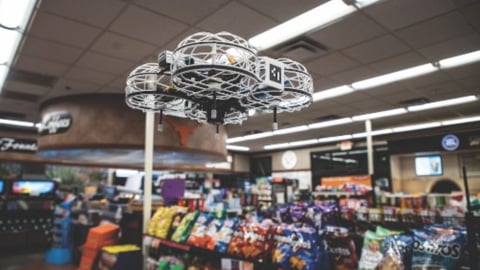Canadian retailers are catching up to global peers on seamless commerce, KPMG report finds
Despite historically trailing behind other countries in seamless commerce, Canada emerged fourth among eight major countries in making retailing a simpler, friendlier and more convenient experience for consumers, according to a new KPMG International report.
"Canadian retailers are making significant strides to build bridges across multiple channels – online and bricks and mortar – to become more efficient and improve the consumer shopping experience," says Kostya Polyakov, partner and national leader for consumer and retail, KPMG in Canada. "Amid tight profit margins, higher costs and sharply lower discretionary spending, retailers recognize they must embrace digital solutions to remain competitive and stay in business."
Over the past three years, Canadian retailers accelerated their growth in omnichannel solutions amid increased expectations from consumers now accustomed to purchasing from giant U.S. retailers, which in many cases are further ahead in digitizing their operations, adds Polyakov.
A recent KPMG in Canada survey found that, despite the pandemic accelerating the move to online shopping, 67% of Canadians still prefer to shop in-store versus online. A similar storyline is unfolding in the U.S., with 70% of total retail sales coming from brick-and-mortar locations, the report finds.
The survey found Canadian shoppers want more detailed specs, better search functionality, easier returns, the ability to ask questions about a product and a better delivery experience as necessary to improve the online shopping experience. Meanwhile, research found that Americans focus more on speed, convenience, and personalization, likely due to the larger availability of e-commerce experiences and products in the U.S., the report says.
"Retailers must shift their focus from channel to customer," says Polyakov. "Consumers expect retailers to meet them where they are – online, whether it's mobile or laptop, in-store, or on social media – and to deliver the same experience regardless. The only way retailers can meet their expectations is by breaking down data silos and developing a seamless, connected experience."
While physical stores aren't disappearing anytime soon, Canadian consumers expect a 'phygital' shopping experience, which seamlessly combines the service experience of in-store shopping with the product variety and convenience found online, says Polyakov.
"E-commerce capabilities like click and collect and return in-store are becoming must-have services for retailers to remain competitive," he says. "But seamless commerce needs to go beyond that. Our survey found almost two-thirds of Canadians want retailers to be more creative when replicating in-store experiences online, such as using virtual reality and artificial intelligence."
READ: Gap remains between digital and in-store experience
Retailers in China and most of Asia are already adopting live social commerce—which allows for real-time buying and interaction during live video events. However, Canada has yet to catch on to this concept, with KPMG's research finding that most Canadians don't make purchases from social platforms, and that's not expected to change soon. Over the next three to five years, only 4% of Canadians say they intend to use social platforms more frequently to make purchases—while nearly five per cent expect to use them less frequently.
"While live commerce isn't a huge factor yet in Canada, we expect this will change as more retailers experiment with their offerings to attract younger audiences who find the format fun and engaging and a way to secure better deals and prices," says Polyakov. "Retailers will need to stay one step ahead by delivering consistent, personalized experiences, regardless of how customers choose to shop.”





